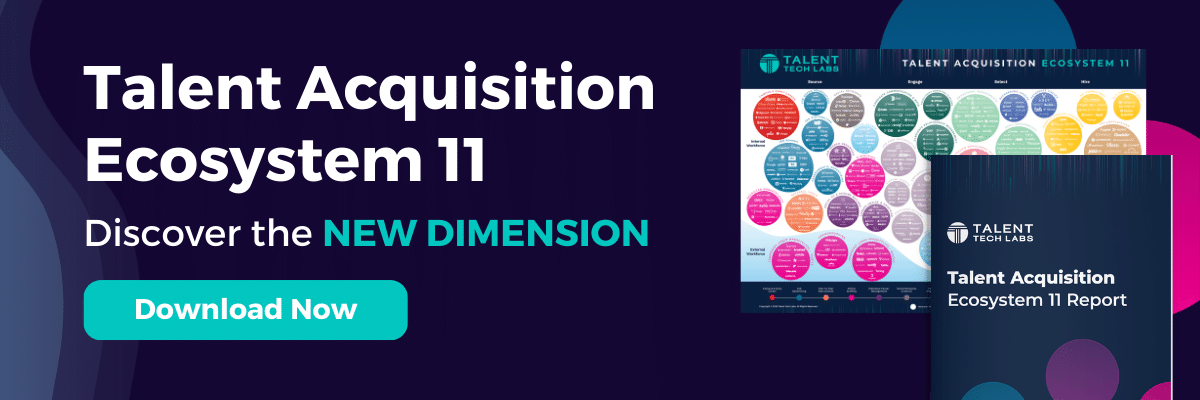With Pride Month underway, we are reminded of the ongoing commitment to cultivate Diversity, Equity, Inclusion and Belonging (DEIB) within organizations. In recent years, talent technology has emerged as a powerful tool in driving meaningful change within organizations. By leveraging the capabilities of these technologies, companies can advance their commitment to DEIB, creating an environment where all individuals can thrive. In this blog post, we specifically explore talent technology that supports diversity hiring during Pride Month and beyond.
Building the Business Case for Diversity, Equity, Inclusion and Belonging (DEIB):
Fostering a diverse and inclusive workforce sounds like the kind of thing a business should do “just because,” and it may surprise many that a business justification is even necessary for hiring a diverse workforce in the first place. That said, firms have competing priorities and limited resources, and thus unless there’s a compelling business case, diversity programs may not receive the attention or funding they require to succeed.
DIVERSE COMPANIES PERFORM BETTER: More diverse companies generally perform better than their less diverse counterparts, in terms of ability to innovate and bottom-line financial results. There are two explanations for this. One, firms that better reflect the customers they serve are better able to understand their needs and build products that meet those needs. Two, research suggests that teams composed of members with different backgrounds have to work harder to come to consensus and are more likely to challenge one another. Essentially, this means that diverse teams literally think and deliberate longer, deeper, and harder about problems in order to come to a solution, which makes them explore more paths and consider more points of view.
TALENT DEMANDS DIVERSITY: Talented individuals have never had more choice or opportunity in managing their careers, and are increasingly interested in working for firms that share their values. Firms that have a diverse and inclusive work culture can use that to attract and retain hard-to-recruit individuals.
UNDERSERVED COMMUNITIES ARE A WHOLE NEW TALENT POOL: Serving underserved communities can open up whole new talent pools from which firms can recruit. While some of the career paths or sourcing channels may not be traditional (for example a mid-career professional that retrains at a bootcamp as a software developer), firms have found great success in tapping into diverse communities for talent. An example of this in practice was a large organization’s move away from a limited network of colleges and universities in their early career program (which they historically relied on) towards what turned out to be a much broader and more inclusive “marketplace” of early career talent (irrespective of college / university), which was facilitated by a change in technology which had direct relationships with students as opposed to colleges.
Technology that Supports DEIB:
There is a wide range of technologies in the market that support a thriving, inclusive professional environment where all individuals feel valued, respected, and empowered. With new innovations emerging daily, this is just a sample of the technologies available that support DEIB goals within an organization.
Job board vendors have focused on building unique access to diverse populations and building valuable connections. For example there are many job boards focused on diverse communities, DEI-focused job distributors and platforms with solutions designed to improve diversity sourcing.
Programmatic advertising tools assist with vendors that know exactly where to target certain candidate populations, and these give organizations the ability to get access to a network of sites that may not be on the radar.
Social search tools map out the entire passive landscape with a granular emphasis on diverse communities. We’ve seen vendors add AI-based diversity filters and blind hiring modes, providing companies with the ability to instantly find diverse candidates to add to the funnel.
Job post optimization tools support inclusive job descriptions, can identify gender-coded language in job descriptions, and remove the jargon that turns away candidates. Research from the University of Waterloo and Duke University indicates that women are less likely to apply for roles with masculine-coded language. Gender-neutral coded-language performs better in professional roles with higher apply rates and lower cost-per-application (CPA), and we have seen this in practice with our clients.
Referral tools can be used to find diverse candidates hidden in your internal staff’s networks. Using a referral tool in and of itself will not automatically drive diverse candidates to apply. However, when thoughtfully used, these tools can help engage segments of your existing workforce that have diverse networks.
Employer branding technology supports career sites that are engaging, mobile friendly, and that highlight the company’s culture and diversity, which can make an individual with a diverse background more likely to apply. The second way this technology can be used to enhance diversity is using it to analyze job descriptions and make modifications, incorporating gender and ethnic-neutral language. This has been shown in practice to increase the number of diverse applicants, particularly women.
Video Interviewing technology has evolved considerably to mitigate the potential impact of both conscious and unconscious biases. Video Interviewing technologies offer multiple ways to remove the visual and/or audio signals from the interview process, such as one-way recorded interviews and speech analysis software.
Structured interview building tools allow recruiters and hiring managers to choose the skills and behaviors they want to assess. Some platforms can provide insight on the things that top interviewers (the most predictive and inclusive) are doing and should be replicated. The platforms also reveal prevalent biases in the interview process and provides continuous feedback in order to overcome them.
Assessment technology allows firms to minimize dependence on resumes as the primary signal in hiring decisions. It can provide an unbiased way to measure job performance, and can open up access to opportunities to underrepresented groups by facilitating the means to demonstrate mastery and fit in a role.
Matching technology uses parsing software, algorithms, natural language processing, and machine learning to “read” resumes and match candidates to available jobs. Matching systems can be used to decrease bias in the sourcing process, either by automating the sourcing process entirely, hiding applicant demographic information, or simply by scoring/ranking candidates, which provides quantifiable evidence that a candidate is qualified and should move forward in the process and can be used as a check on the fairness of the hiring process for under-represented groups.
Conclusion
With a myriad of options in the market, the aforementioned technologies are just a sample of different innovations that support DEIB objectives in professional environments. By leveraging the capabilities of these technologies, companies can advance their commitment to inclusivity, creating an environment where individuals from all walks of life can thrive. Talent Tech Labs is specialized in supporting companies throughout their entire DEIB technology journey and vendor evaluation experience. To learn more about how Talent Tech Labs can help your organization, reach out today!


